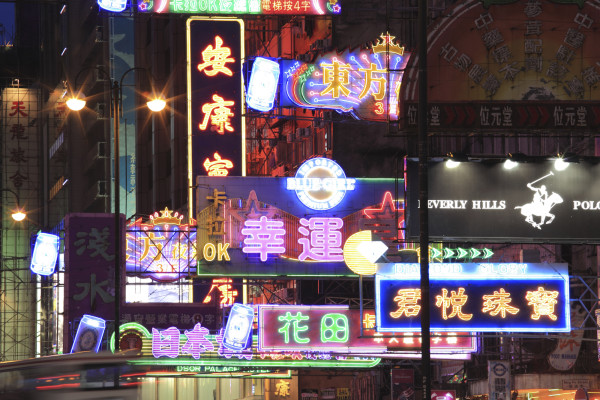Urban energy transitions: spatial and temporal aspects

With over 70% of the population thought to be living in urban areas by 2050, environmental challenges are necessarily urbanisation challenges too. Promoting urban energy transition to ensure cleaner, more sustainable sources of power for cities is a multidimensional challenge that must address three interrelated, but sometimes competing, objectives.
First, the decarbonisation of the built environment will require an overall reduction of both embodied (for example, from construction) and operational (for instance, from heating and air-conditioning) GHG emissions from urban areas.[1] Urbanisation is strongly correlated with higher levels of energy consumption and greater Green House Gas (GHG) emissions.[2] Thus, an urban energy transition must transform human settlements patterns to reduce carbon emissions.
Second, concerns for urban energy security emerge from a preoccupation with resource availability and the need to guarantee such resources to reproduce urban economies.[3] This is particularly true for poor cities where processes of urban expansion simultaneously threaten their resource base and their capacity to provide appropriate services.[4]
Third, universal energy access in urban areas is still an elusive goal, particularly related to the lack of recognition of energy as a basic service and a limited understanding of how energy supports people’s livelihoods.[5] Progress towards sustainable energy has been steady but limited, with around 210 million people in urban areas lacking access to the electricity grid and 500 million lacking access to modern cooking fuels.[6] New methods to evaluate the multi-dimensional nature of energy access demonstrate that, even when they are connected to the grid, people may lack energy access if they cannot afford a continuous service or if the service is of intermittent or bad quality.[7]
The ESRC project Mapping Urban Energy Landscapes engages with the spatial dimensions of urban energy systems. In a seminal book, Owens conceptualised the relationship between energy systems and spatial structure in three links: development of spatial structure in relation to the nature, location and availability of energy sources; the structuring of energy requirements in relation to the spatial structure; and the constraints that energy sources, spatial structure and energy requirements pose on the development of energy innovations and alternative energy systems.[8] Since then there has been a steady body of scholarship studying how urban morphology (the granular structure of urban areas in blocks or groups of buildings) and urban form (its distribution in zones) impact the embodied and operational energy of the built environment, from influencing heat demands to shaping users’ behaviours.[9]
This literature has particularly challenged a planning emphasis on singular models of urban development, such as the compact city, which are often applied without attending to the diversity of human settlements.[10] Instead, this body of research shows that sustainable urban forms can be achieved in multiple ways.[11] Urban energy landscapes engage with the variety and specificity of ways in which energy is embedded in the urban fabric.
Simultaneously, urban energy landscapes engage with the temporal dimension of urban energy systems. Coevolution is a concept that explains the uniqueness of the landscape perspective. It refers to processes of interaction between evolving human and biophysical systems that account for the changes in both systems.[12] Coevolution occurs when change over time in seemingly separated systems (human and biophysical) leads to a mutual response.[13] In an urban setting, coevolution refers to the coupling of social systems with particular configurations of the built environment that enable resource transformation.
Coevolution challenges traditional understandings of energy because it breaks assumptions about the causal mechanisms that mediate ecologies, technology and society. For example, many studies in urban morphology research accept Owens’ two directional assumptions about the influence of the availability of energy resources on spatial structure and the influence of spatial structure on energy requirements.[14] However, a co-evolutionary perspective suspends assumptions about the causal directionality between two systems, i.e. one causing the other. Instead, coevolution presupposes mutual influence between social practices, technology and the built environment, and the ecosystems that sustain them.[15]
Co-evolution emphasises systemic change that emerges from the variation between individuals within the system, but there is no assumption of progress in that change.[16] Thus, co-evolution does not imply any teleological explanation about the organisation of social, technologies and ecological systems. Instead, coevolutionary analyses look at the interconnected string of historical factors and events that explains the contemporary situation.

The sequence of states that over time leads to the current state of urban energy systems can be thought of as an urban trajectory. In terms of how people use energy, for example, this trajectory can be conceived of as a ‘chain of experiential needs’ through which multiple elements of the urban energy system become interconnected.[17] Take a city like Maputo, in Mozambique, where the development of its energy system has been closely tied to the regulatory mechanisms and local beliefs that prevent low-income households living in reed houses from connecting to the electricity network. As people met their energy needs using solid fuels, these have been embedded both in relation to local livelihoods and cooking practices that are choreographed within a given architecture (cooking takes place in the courtyard to prevent indoor pollution).
The states that constitute a given trajectory are embedded in broader contexts, or pathways, that help articulate future visions. Pathways refer to a wide diversity of imagined urban futures that emerge from critical junctures – or path bifurcations – and are likely to shape the direction of travel and close off alternative destinations.[18] Pathways emphasise future possibilities and alternative courses of action.[19] Pathways are thus linked to multiple and competing values that shape change trajectories.[20] A landscape perspective helps explain these pathways in relation to specific objects, their materiality and how they are inserted in the urban fabric: these energy-dependent socio-technical artefacts define the city, its politics and spatial relations, and hence, the urban energy landscape.
What this means for understanding the urban energy transition can be explained with reference to the case of Hong Kong. Its energy system is marked by its dependence from imported fossil fuels and by the structure of the housing system. Two century-old companies, the Hongkong Electric Company (HEK) Ltd and CPL Power Hong Kong (CPL) Ltd, supply electricity to the city, mainly from power plants that burn coal or gas. Both companies import fuels (coal from Indonesia and gas from Oman and Australia), and CPL imports nuclear energy from mainland China. In terms of the spatial use of energy, Hong Kong is a superb example of a compact city. In the words of one local policy maker, the city is low carbon “by accident”, especially because the population pressure on land has pushed up land prices.
Nevertheless energy consumption is quite high. Electricity amounts for 54% of energy use, while oil and coal products amount for 29% and town gas and LPG 17%. Most of the oil and coal (89%) is used in transport. By contrast, most of the electricity (93%) and the town gas and LPG (67%) are used in the residential and commercial sectors – that is, the built environment. The consumption of energy in these sectors is very high, despite the relatively compact spatial configuration of the city with its high-rise towers and mixed land use. Electricity consumption per capita, for example, is 5.955 kWh/capita, more than double the average in mainland China. Energy intensity has decreased as GDP has grown from 2002 to 2012, again showing the powerful link between energy use and the economy.

Neon signs and billboards are one key example of a socio-technical artefact that characterises socio-energetic relations in Hong Kong, particularly within the commercial sector. For those of us who only know Hong Kong as tourists or occasional visitors, Hong Kong is a city of neon. In the period that followed the Second World War, neon signs substituted traditional oil lamps and banners that shopkeepers used to advertise their shops. During the 1950s, 60s and 70s, the ‘sea of neon lights’ in Kowloon trading streets such as Nathan Road came to symbolise growth and prosperity. By contrast, communist-sanctioned cultural products in mainland cities such as Shanghai used neon signs as symbols of consumerism and decadence.[21] Neon signs in Hong Kong continue to shape today’s urban landscape and its economy.
However, increasingly this entrenched feature of the city’s environment has come to be replaced by an alternative technology, Light Emitting Diodes (LEDs). Though already developed in the 1960s, commercial applications of LEDs only took off at the turn of the millennia. Many shop keepers in Hong Kong now prefer LEDs because they consume less electricity while providing more intensity of light. Compared with the traditional craft of neon signs, LED signs can be produced in a relatively inexpensive way, and shopkeepers can choose from a range of designs. In recent decades cheap LED signs manufactured in mainland China have appeared in the streets of Hong Kong, often replacing neon signs. Simultaneously, health and safety preoccupations have led to the removal of many of the emblematic old neon signs.
The decline of neon is visible in Hong Kong’s streets and in the small artisanal economies that neon has sustained for decades. Embedded with a sense of nostalgia, neon signs have gained new significance: they have come to represent a disappearing past. For example, the Blue House in Wan Chain, Hong Kong Island, one of the few remaining buildings from the nineteenth century and a bastion against gentrification, organised in the Spring of 2015 an exhibition that celebrated local signs, with neon lighting playing a key role. The previous year, the Kowloon Cultural Centre also organised an online neon exhibition that requested the submission of pictures which received an overwhelming public response.
Some have seen this as a symptom of a perceived loss of identity in the city since its transference to the People’s Republic of China in 1997. A sense of longing for a past city that seem to be vanishing with the neon lights resonates with the concerns of the ‘Umbrella Revolution’ that swept the city in 2014. Neon lighting reveals a contradiction between this nostalgia and the aspiration to become a modern world city. Through these processes, both neon and LED signage have become embedded in the urban fabric, co-evolving with the built environment and the localised economies that it sustains.
When we look into urban energy landscapes the central question is not how to change our behaviour or improve the energy mix, but rather, how urban citizens live with energy and the kind of dependencies that have emerged from the coevolution of urban and energy systems. Understanding urban energy landscapes requires looking simultaneously at the ecological resource flows that sustain the city and how the built environment shapes local energy practices. In Hong Kong, for example, the energy system is shaped by its reliance on fossil fuels and by the highly dense spatial configurations of the city. Looking at the cultural histories of specific artefacts, such as Hong Kong’s neon signs, facilitates a direct engagement with both the energy flows and spatial patterns of energy use. Artefacts also influence cultural understandings of the city and they may even be used as political symbols. These connections illuminate the significance of energy in this particular city and the complex relationships between energy systems and broader cultural and social understandings of urban infrastructure.
[1] Karvonen A. (2013) Towards systemic domestic retrofit: a social practices approach. Building Research & Information 41: 563-574.
[2] Seto KC, Dhakal S, Bigio A, et al. (2014) Human Settlements, Infrastructure and Spatial Planning. In: Edenhofer O, R. Pichs-Madruga, Y. Sokona, E. Farahani, S. Kadner, K. Seyboth, A. Adler, I. Baum, S. Brunner, P. Eickemeier, B. Kriemann, J. Savolainen, S. Schlömer, C. von Stechow, T. Zwickel and J.C. Minx (ed) Climate Change 2014: Mitigation of Climate Change. Contribution of Working Group III to the Fifth Assessment Report of the Intergovernmental Panel on Climate Change Cambridge, United Kingdom and New York, NY, USA: Cambridge University Press.
[3] Hodson M and Marvin S. (2009) ‘Urban ecological security’: a new urban paradigm? International Journal of Urban and Regional Research 33: 193-215.
[4] Godfrey N, Savage R, Finch E, et al. (2012) Future Proofing Cities. London: DFID.
[5] Singh R, Wang X, Ackom E, et al. (2014) Energy access realities in urban poor communities of developing countries: assessments and recommendations. Conpenhagen: Global Network on Energy for Sustainable Development (GNESD).
[6] OECD/IEA. (2010) Energy Poverty: How to make modern energy access universal? (2010 World Energy Outlook Excerpt) Paris: International Energy Agency; SE4ALL. (2015) Progress towards sustainable energy 2015. Washington DC: World Bank.
[7] SE4ALL, op. cit.
[8] Owens SE. (1986) Energy, planning and urban form, London: Taylor & Francis.
[9] Recent examples include Rode P, Keim C, Robazza G, et al. (2013) Cities and energy: urban morphology and residential heat-energy demand. Environment and Planning B: Planning and Design 40: 138-162; Wong NH, Jusuf SK, Syafii NI, et al. (2011) Evaluation of the impact of the surrounding urban morphology on building energy consumption. Solar Energy 85: 57-71; Zhou J, Lin J, Cui S, et al. (2013) Exploring the relationship between urban transportation energy consumption and transition of settlement morphology: A case study on Xiamen Island, China. Habitat International 37: 70-79; Salat S. (2009) Energy loads, CO2 emissions and building stocks: morphologies, typologies, energy systems and behaviour. Building Research & Information 37: 598-609; Howard B, Parshall L, Thompson J, et al. (2012) Spatial distribution of urban building energy consumption by end use. Energy and Buildings 45: 141-151; Zanon B and Verones S. (2013) Climate change, urban energy and planning practices: Italian experiences of innovation in land management tools. Land Use Policy 32: 343-355.
[10] For a seminal critique, see Jenks M, Burton E and Williams K. (1996) The compact city: a sustainable urban form?, London: Spon Press.
[11] Williams K, Jenks M and Burton E. (2000) Achieving sustainable urban form, London: Spon Press.
[12] Norgaard RB and Kallis G. (2011) Coevolutionary contradictions: prospects for a research programme on social and environmental change. Geografiska Annaler: Series B, Human Geography 93: 289-300.
[13] Weisz H. (2011) The probability of the improbable: society–nature coevolution. Geografiska Annaler: Series B, Human Geography 93: 325-336.
[14] Owens, op. cit.
[15] Brand R. (2005) Urban infrastructures and sustainable social practices. Journal of Urban Technology 12: 1-25.
[16] Weisz, 2011, op. cit.; Fracchia J and Lewontin RC. (1999) Does Culture Evolve? History and Theory 38: 52-78.
[17] Brand R. (2008) Co-evolution of Technical and Social Change in Action: Hasselt’s Approach to Urban Mobility. Built Environment (1978-) 34: 182-199.
[18] Rydin Y, Turcu C, Guy S, et al. (2013) Mapping the Coevolution of Urban Energy Systems: Pathways of Change. Environment and Planning A 45: 634-649; Hodson M, Burrai E and Barlow C. (2015) Remaking the material fabric of the city: ‘Alternative’ low carbon spaces of transformation or continuity? Environmental Innovation and Societal Transitions.
[19] For example, Marletto G. (2014) Car and the city: Socio-technical transition pathways to 2030. Technological Forecasting and Social Change 87: 164-178; O’Neill BC, Kriegler E, Ebi KL, et al. (2015) The roads ahead: Narratives for shared socioeconomic pathways describing world futures in the 21st century. Global Environmental Change; Rydin Y, Turcu C, Chmutina K, et al. (2012) Urban energy initiatives: the implications of new urban energy pathways for the UK. Network Industries Quarterly 14: 20-23; Turnheim B, Berkhout F, Geels F, et al. (2015) Evaluating sustainability transitions pathways: Bridging analytical approaches to address governance challenges. Global Environmental Change 35: 239-253.
[20] Leach M, Scoones I and Stirling A. (2010) Dynamic sustainabilities: technology, environment, social justice, London: Earthscan.
[21] Braester, Y. ““A Big Dying Vat” The Vilifying of Shanghai during the Good Eighth Company Campaign.” Modern China 31, no. 4 (2005): 411-447.